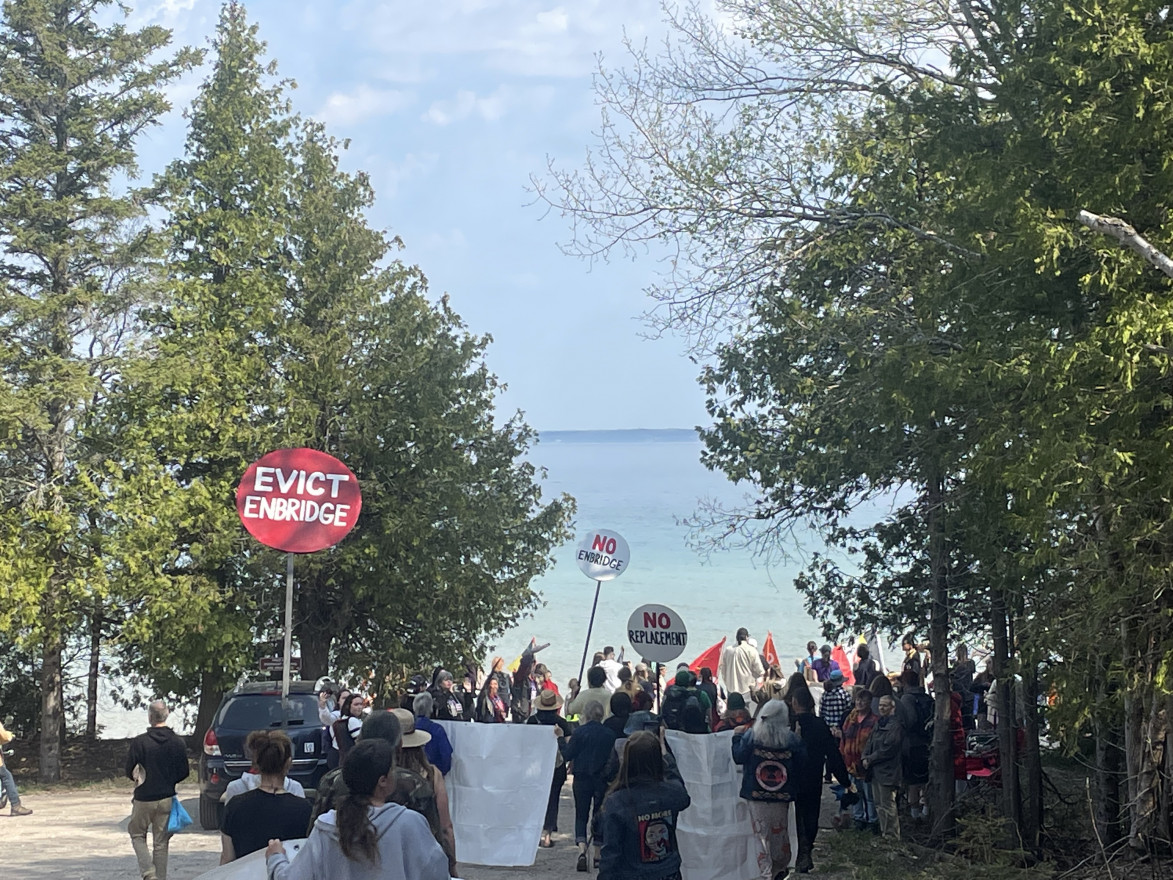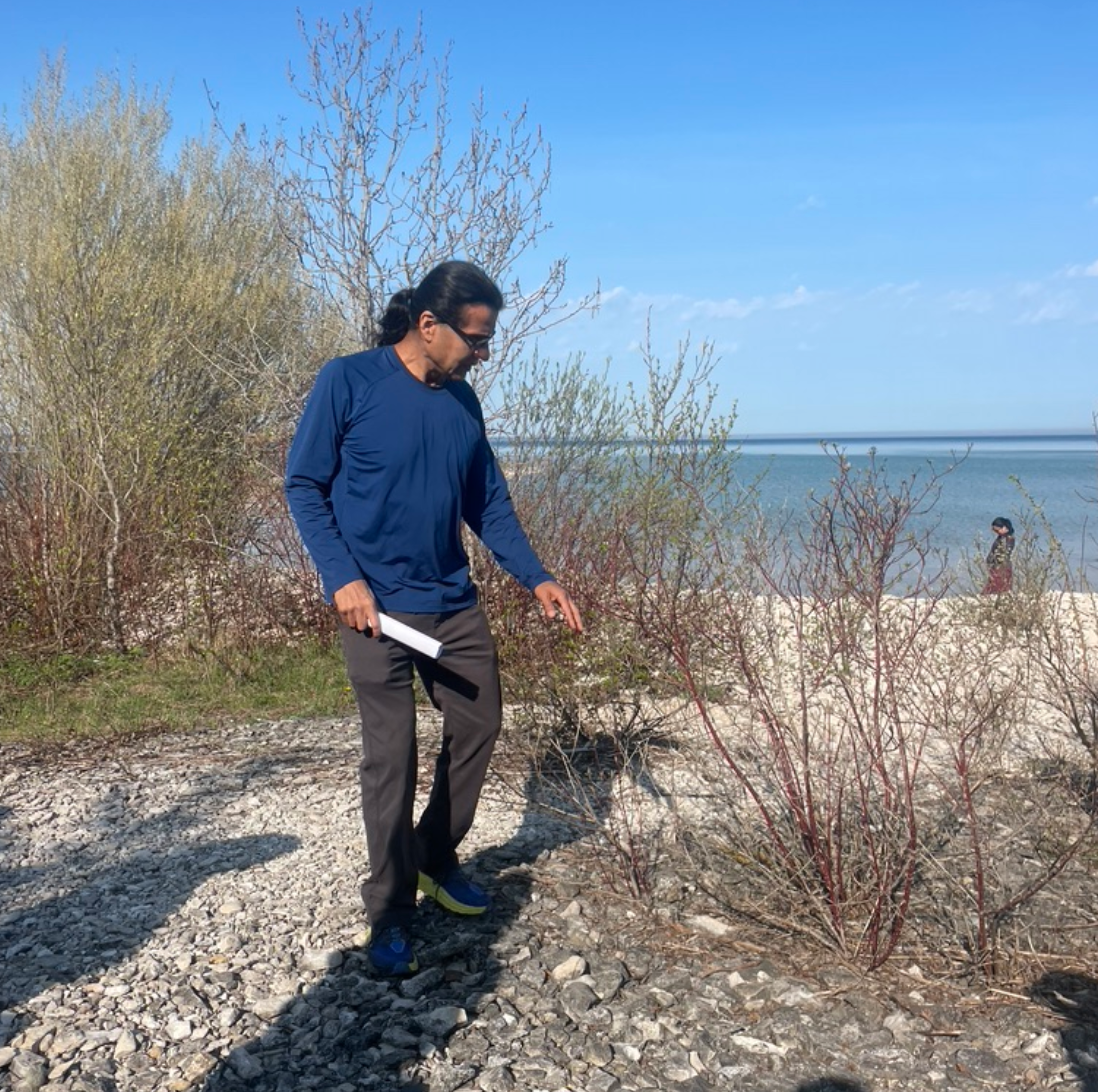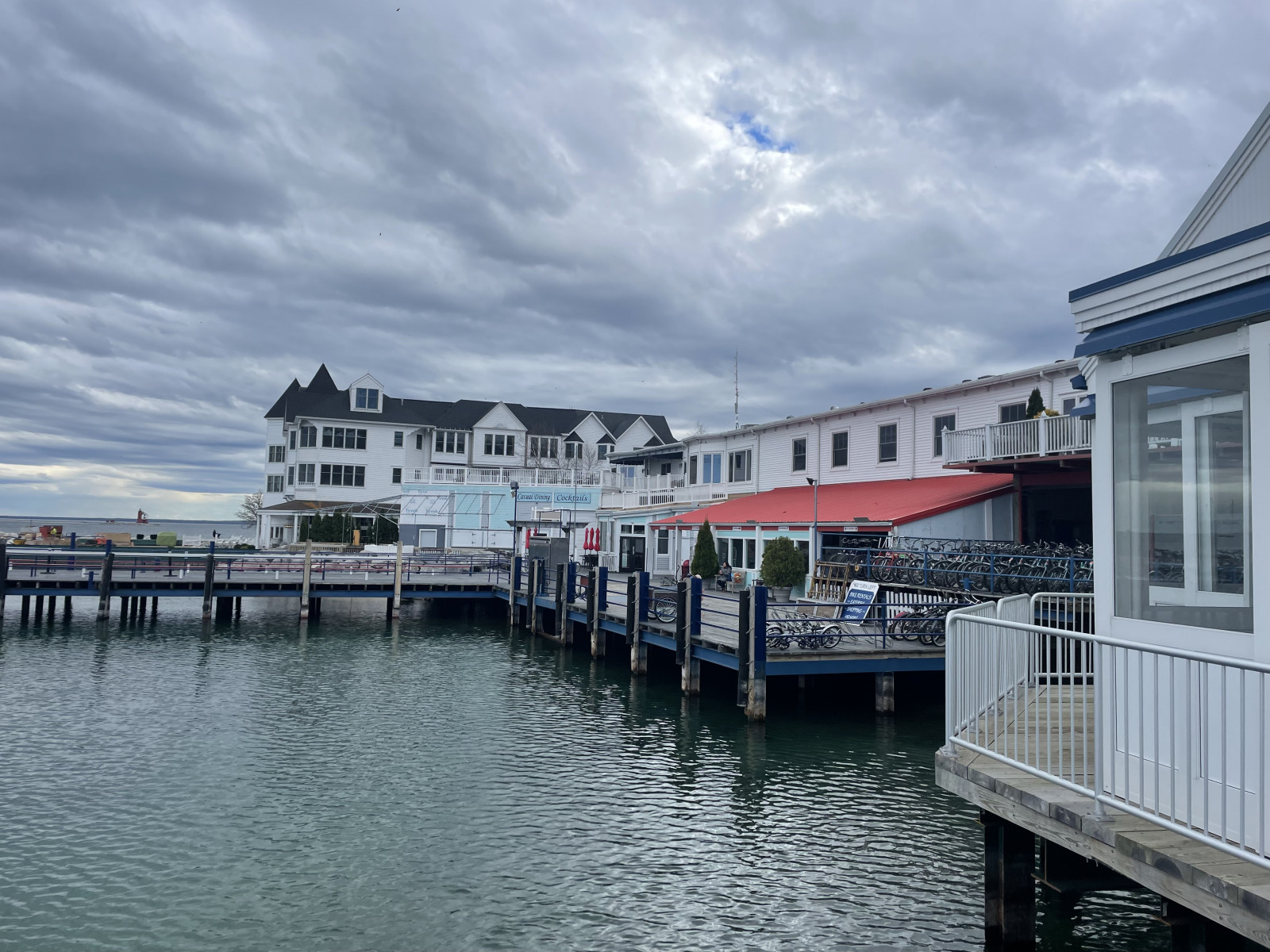
At the Heart of the Turtle Gathering, protestors called for the shutdown of Enbridge Line 5 and cancellation of the proposed tunnel project. (Samantha Anderer/Medill)

At the Heart of the Turtle Gathering, protestors called for the shutdown of Enbridge Line 5 and cancellation of the proposed tunnel project. (Samantha Anderer/Medill)
By Samantha Anderer
As Nathan Wright walks along the rocky shores of Little Traverse Bay, it’s clear that he belongs there. A member of the Sault Ste. Marie Tribe of Chippewa Indians, Wright’s ancestors have cultivated the landscape of what is now Harbor Springs, Michigan for generations. His tranquility radiates outward among the trees and birds.
“You’re developing a relationship with the land and Mother Earth, you’re paying respect to it,” Wright says. “You’re honoring the plant and you’re also honoring yourself, because you become more connected.”
Wright is a tribal water protector and brought water protectors of many tribes together May 13-14 for the Heart of the Turtle gathering he helped organize in Mackinaw City. The gathering combined traditional knowledge and modern methods of environmentalism to raise awareness for the climate crisis and call for an end to fossil fuels, according to the official event flyer.
Water protectors are activists that focus specifically on keeping water systems clean and safe. For many Indigenous communities, such as the Sault Ste. Marie Tribe of Chippewa Indians, water is also protected through rituals and offerings of tobacco. These practices extend to other natural life such as plants, though relationships with the land are also maintained through more hands-on approaches. While the method of care varies depending on the plant, certain types of pruning can help stimulate growth and longevity.
“We’ve got a saying, as Anishnawbek, that if you don’t use it, it’ll go away. The plant will leave,” Wright says. “Our activity of being out there helps generate that activity of the roots to make them want to grow.”
For outdoors buffs and environmental stewards, slogans such as “leave no trace” fit perfectly with the principles national parks and nature preserves preach. Considering the influence humans have had on the environment over the past century, the concept of leaving nature alone seems to make complete sense. Yet the story is not that simple.
The idea of a pristine wilderness is a relatively recent concept, popularized as industrialization imposed distance between people and land. This viewpoint fails to consider the role that humans historically played as part of the natural ecosystem, particularly discounting the longstanding relationship between Indigenous peoples and Mother Nature. Mountains, rivers, plants and animals are featured prominently in Native American stories as dynamic participants.
As an Indigenous herbalist, Wright explains that there is an obligation to the flora he works with.

Large-scale government organizations have applied parts of this traditional land management approach. Fire rangers at the Hiawatha National Forest Ranger Station near Manistique, Michigan take an active role in preserving the forest — which occupies 894,836 acres of Michigan’s Upper Peninsula — through controlled burnings. In addition to reducing the impact of future wildfires, the burns can get rid of invasive species, expel harmful insects and even release seeds for certain plants.
“When we put fire to an area, it restores the habitat,” Zone Fire Management Officer Cory Henry says. “Yes, there is potential harm and danger to fire. However, if we use and manage [it] and are able to utilize fire’s benefits, we can actually have stronger, more resilient ecosystems.”
Native Americans also used fire to maintain natural growth. Burnings create ash that can serve as a nutrient-rich fertilizer and the heat can open up cones to release the seeds of certain plants.
Although there are potential benefits to human interactions with the land, the pros and cons of certain practices render them subject to some debate. One such practice is clear-cutting, which involves the removal of all the trees from a certain area of land. While some oppose the practice because of its ability to disrupt an area’s ecological integrity, Henry says it is sometimes used in the Hiawatha National Forest and can be beneficial.
Henry specifically cites the habitat advantages grouse enjoy from the removal of natural disturbances. He also notes that while nesting birds and some other animals may serve as collateral damage, the majority of animals are able to flee in time. Even so, such a practice doesn’t fully align with Indigenous conventions.
“When I hear forest management, clear-cutting and all that tree-cutting service, that’s not forest management. Forest management to me is reclaiming the seeds, checking all things, removing invasive species, making sure that the animals are protected,” Wright says.
Land and water management debates puncture the broader political context of energy, oil and climate change. Currently, one of the largest controversies in northern Michigan and the Upper Peninsula surrounds the Enbridge Line 5 oil pipeline, which passes under the Straits of Mackinac where Lakes Michigan and Huron connect.
The pipeline was constructed in 1953 to provide crude oil and natural gas for homes, cars and manufacturing. While the pipeline’s age and reports from Enbridge about missing segments of protective coating have raised concern about potential leaks, the company maintains that the pipeline is secure.
“There’s no lifespan with a big piece of infrastructure like this” with proper maintenance, says Enbridge Corporate Communications and Media Relations Strategist Ryan Duffy. “Lifespan is determined by scheduled inspection, how it works, all those things.”
Despite Duffy’s claims, Enbridge doesn’t have a clean track record regarding oil spills and leaks. According to Greenpeace, Enbridge and its joint ventures and subsidiaries reported 307 hazardous liquid incidents to federal regulators between 2002 and 2018 involving the Canadian company’s pipeline systems that stretch across much of the U.S. and parts of Canada.
The largest of these incidents occurred in 2010, when the 30-inch Enbridge Pipeline 6B rupture spilled an estimated 843,000 gallons of oil into the Kalamazoo River in southern Michigan.
After undertaking a state-ordered risk assessment, researchers at Michigan Technological University reported that a worst-case scenario rupture in the Straits would greatly impact both Lake Michigan and Lake Huron, including approximately 400 miles of shoreline. The damage could affect 60,000 acres of wildlife habitats, threatening 47 different species. All the Great Lakes would be potentially impacted by a major rupture, according to other estimates.
Though the report detailed the most extreme potential consequences, locals, activists and other invested parties say the cause for concern is evident. In addition to environmental damage, a spill would have detrimental economic implications. Cleanup alone would cost around $1.9 billion according to the report, which doesn’t account for the losses faced by local businesses that rely on the area’s heavy tourist traffic.
One of the main attractions of the Mackinac Straits is Mackinac Island. Once an important site for fur trading, its Victorian architecture and car-free streets remain as a National Historic Landmark providing a peek into the past. Sitting on Mackinac’s picturesque main street is the Loon Feather & Balsam Shop, which Mary Dufina has owned and operated for 50 years.

“To think that there might be a problem, especially with an older line like that — and there’s been problems — it’s just too big of a risk,” Dufina says. “It would devastate the area and the business in this area. Tourism is our business all through the Upper and Lower Peninsula. So if we don’t have that we’re done for.”
Recognizing the validity of local fears, Enbridge introduced its Maritime Pipeline Protection Program in July 2020 after a ship anchor caught on one of the two pipelines in the Straits. By combining human and technological resources, the program facilitates a sophisticated 24/7 operations center to communicate with ships passing through the Straits, confirming anchors are secured and protecting the pipeline and the surrounding environment from the dangers of anchor strikes.
To further alleviate concerns about other forms of damage, Enbridge is proposing its Great Lakes Tunnel Project, which would fully enclose a replacement for the Line 5 segment in a tunnel drilled under the Straits.
The proposed tunnel has some of the permits it needs already but is still under review by the U.S. Army Corps of Engineers, the government agency responsible for examining possible environmental impacts on the Straits and the surrounding areas. Duffy said he is optimistic that the plan will have minimal environmental impact.
However, introducing any new system requires the consideration of all possible environmental effects, as the interconnected nature of land and waterways means changes are rarely confined to a single area. As such, many critics — including the State of Michigan — remain wary of the proposed solution and continue to push for a total shutdown of Line 5 to eliminate the risk of rupture in the Mackinac Straits. In order to fight climate change, Wright stresses the need to invest in other sources of energy and to reconnect with the Earth. The Heart of the Turtle gathering included a lakefront water blessing and protest march also calling for a shutdown of Line 5.
“When we have that connection, we’re going to be able to help out the environment and save these lands,” he says. “We’re gonna think twice about clear-cutting a place or putting a pipeline out in the Straits. We’re gonna be more respectful and more honorable.”